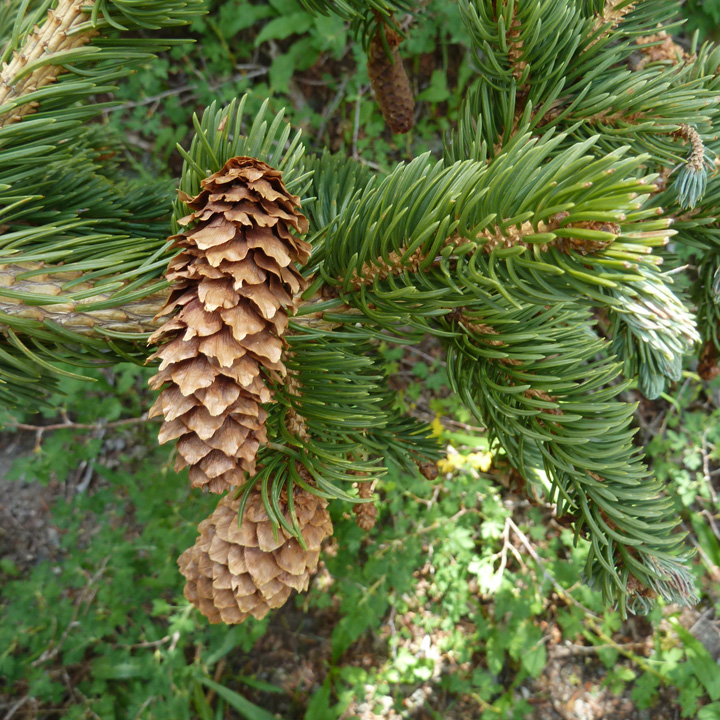- Home
- Search
- Images
- Datasets
- Sample Use
- How to Cite
- Additional Information
- About NEON
- NEON Data Portal
- ASU Biocollections
- About Symbiota
|
Family: Pinaceae |
Trees evergreen; crown broadly conic to spirelike; leading shoot erect. Bark gray to reddish brown, thin and scaly (with thin plates), sometimes with resin blisters (especially in Picea engelmannii and P . glauca ), becoming relatively thick and furrowed with age. Branches whorled; short (spur) shoots absent; twigs roughened by persistent leaf bases. Buds ovoid, apex rounded to acute, sometimes resinous. Leaves borne singly, spreading in all directions from twigs, persisting to 10 years, mostly 4-angled and square in cross section (to triangular or ± flattened), mostly rigid, sessile on peglike base; base decurrent, persistent after leaves shed, sheath absent; apex usually sharp-pointed, sometimes bluntly acute; resin canals 1--2. Cones borne on year-old twigs. Pollen cones grouped, axillary, oblong, yellow to purple. Seed cones maturing in 1 season, usually shed at maturity (persisting for several years in Picea mariana ), borne mostly on upper branches, pendent, ovoid to cylindric, sessile or terminal on leafy branchlets and thus appearing ± stalked; scales persistent, elliptic to fan-shaped, thin, lacking apophysis and umbo; bracts included. Seeds winged; cotyledons 5--l5. x =12. Male and female cones terminating twigs of the previous year's growth; female cones pendulous, with persistent scales much exceeding the bracts; evergreen trees, the quadrangular lvs jointed at the base to a short, projecting sterigma that persists on the denuded branch; resin-ducts 2 in each lf; 2n=24. 30+, N. Temp Gleason, Henry A. & Cronquist, Arthur J. 1991. Manual of vascular plants of northeastern United States and adjacent Canada. lxxv + 910 pp. ©The New York Botanical Garden. All rights reserved. Used by permission. |


